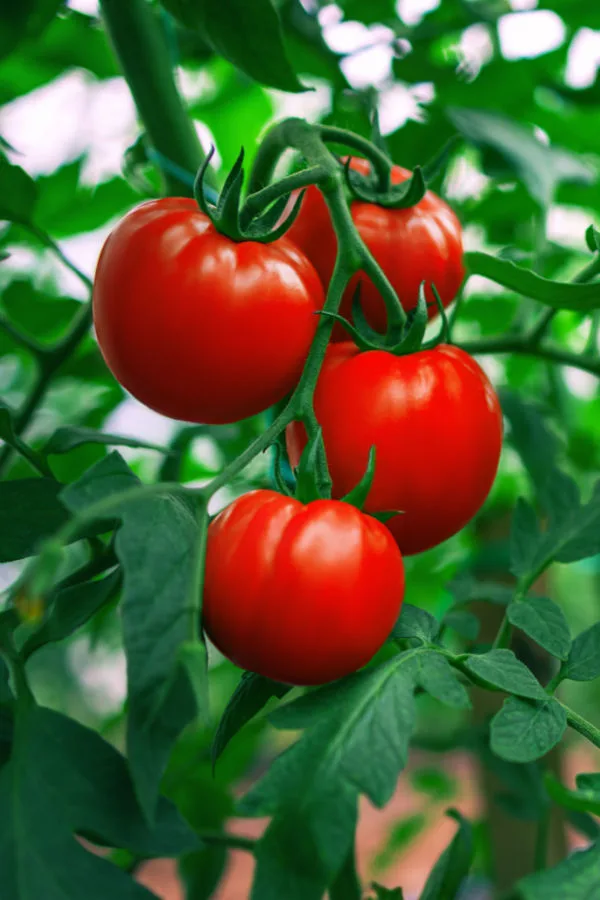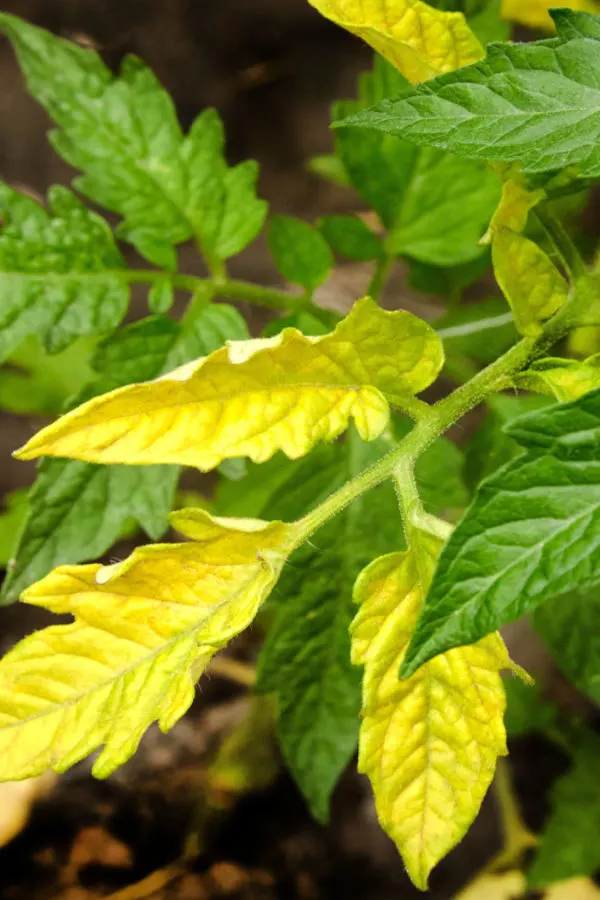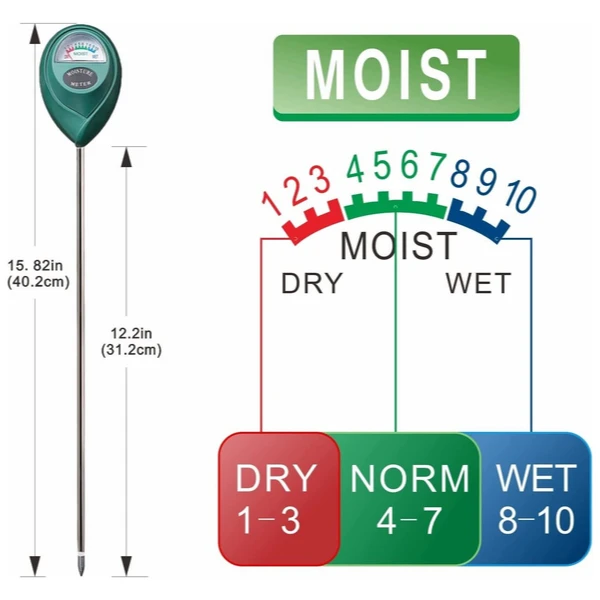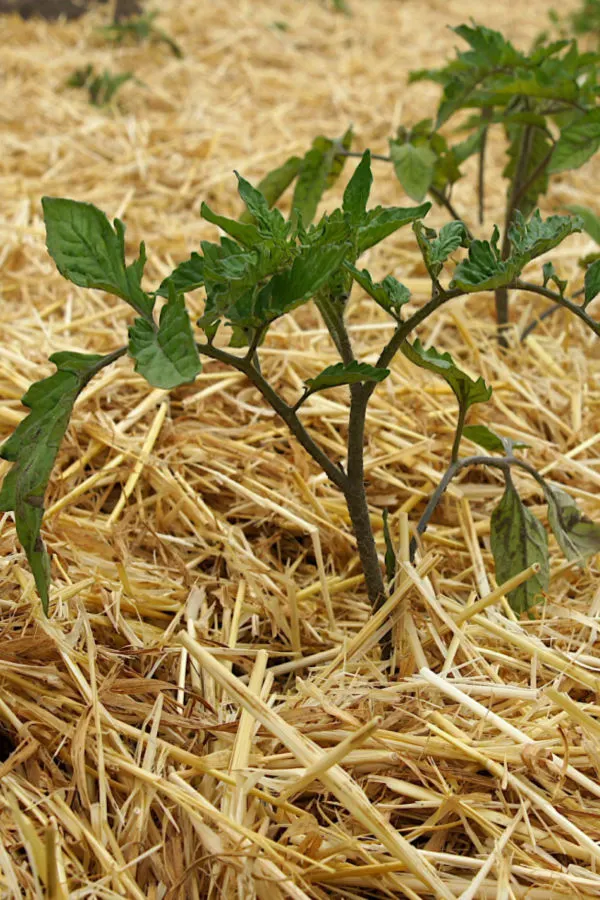There are questions that every tomato grower wants to know the answers to – how and when should I water my tomato plants, and how much water do they need to grow best?
One thing is for sure, moisture is extremely important to the life and production of tomato plants. After all, not only do the roots, stems and foliage of a tomato plant contain and need water to grow – the fruit the plant produces and that hangs from its branches are made up of 95% water as well!
Without enough moisture, a tomato plant’s roots and foliage shrivel. As they do, they become less able to take in oxygen and nutrients- and convert the sun’s rays into energy. The result can be a plant that struggles to flower, produce fruit, or in some cases, even survive.

Unfortunately, getting too much water can create similar issues. When the roots around a tomato plant become overly saturated, they begin to swell and bloat. When this occurs, the roots once again have great difficulty taking in the energy and air it needs to survive.
Tomato plants with soggy roots will often have their leaves turn yellow. This is a direct result of the plant’s inability to power it’s growth. And if growth stalls, it can cause the plant to rot, or at the least, severely impact its ability to produce a viable crop.
How To Water Tomato Plants
Knowing How Much Water Is Enough Water For Tomato Plants
How much water your tomato plants will need will depend on several factors. As a standard rule of thumb, tomato plants need around an inch to two inches of water each week.
But that “rule of thumb” can change based on several factors. For starters, if you happen to grow in a more arid climate, you may need to supply your plants with more. And if you grow your plants in raised beds or in containers, it will increase the need for more frequent water as well.
So how do you really know if your plants need to be watered? No matter where you live or how you grow your tomatoes, success all comes down to making sure the roots of your plants have just the right amount of moisture at all times.

A tomato plant whose soil is constantly drying out for long periods between watering will suffer. As will a plant whose roots stay saturated for days or weeks on end. But just looking at the top of the soil for moisture is not the answer.
Unfortunately, the soil on top can often appear dry, while below the surface, water is pooling around the roots. Likewise, the soil above can seem moist above, while the roots below the soil are starving for moisture. That is why knowing what is going on at the root level is the key to success!
Checking Soil For Moisture – How To Water Tomato Plants
Tomato plants, like all vegetable plants can show obvious signs they need water. Droopy or dry curling leaves are a great indicator a plant needs water. And as noted above, yellowing leaves can signal there is too much water near the roots.
But the only way to really know if your plants truly need water is to check the soil moisture at the root level. The good news is that it’s actually quite easy to do – and there are several simple methods you can use.
Many gardeners use a long, thin wood skewer to check the soil’s moisture near the roots. To check moisture with this method, simply stick the skewer down deep (six to eight inches) in the soil where the roots are growing.
Listen In To Our Podcast Below On How To Grow Your Best Tomato Crop Ever!
If there is moisture present in the soil, some of the soil will stick to the skewer. And if it comes up dry, then you know it’s time to water. This method works, but if you want a more accurate and fast way to see if your plants need to be watered, an inexpensive soil moisture probe is the way to go!
Using A Soil Meter Probe – How To Water Tomato Plants
A soil moisture probe is truly the best way to know if you need to water. And it’s great for using on all kinds of plants growing in all types of situations. Moisture probes work by sensing the available amount of moisture at the end of the probe and indicating it instantly on either a digital or analog readout.
We use soil moisture probes on our containers, hanging baskets and yes, in our vegetable garden too. For tomato plants (and most vegetable and flower plants), keeping the soil to a moisture level between 40% to 80% is ideal.
If we stick the probe in and it is anywhere from 45% and above, we hold off. But when it drops to 40% or below, we know it’s time to water. But knowing when to water is just part of the equation. How you water also matters. In fact, it can make a huge difference in just how successful your plants are.
Watering Your Tomato Plants For Success
When it is time to water, it is best to water your plants low, slow and deep. By watering deep early on, you force the roots of plants to grow and search deep in the soil. Watering less frequently but for a longer duration allows water to go deep.
That is exactly why you don’t want to water every day in the garden, and why we allow the moisture to get down lower before watering. If you constantly water, the plant’s roots stay near the surface. When roots don’t go deep, they become susceptible to dry conditions quickly.
Shallow watering also keeps the roots from expanding their root system deep and wide. An extensive root system allows plants to bring in additional nutrients and moisture when they need them most. Last but not least, weak-rooted plants are also very vulnerable to toppling over in strong wind or storms.
When you water, water low right around the root zone at the soil’s surface. Spraying from up top not only loses a lot of water to evaporation, it also can knock off blooms. It also leaves your tomato plants more open to mildew and other disease from the wet leaves.
As for how much water, we like to use about a quarter to a half gallon per plant when they are between 6 and 12 weeks, and about a gallon per plant when they are large and mature.
Mulch Your Plants! Help Keep Water In The Soil
As a final note, one of the best ways you can help your plants to conserve water and keep your watering efforts to a minimum is by mulching your tomato plants right from the start.
A thick layer of organic mulch not only helps retain moisture in the soil, it also helps to regulate the soil temperature, allowing roots to stay warmer in cooler conditions, and cooler when the thermometer soars. Equally important, it stops competing weeds from taking over. See: How & Why To Mulch Tomato Plants – The Simple Secret To Great Tomatoes!
For best results, mulch your plants with a four to six inch layer of straw, grass clippings or shredded leaves. Your plants will thank you, and even better, it will reduce the need for watering greatly. Here is to watering your tomato plants for success this year! For even more tomato growing tips, see: Why Are My Tomatoes Splitting & Cracking? And How To Prevent It!
Jim and Mary Competti have been writing gardening, DIY and recipe articles and books for over 15 years from their 46 acre Ohio farm. The two are frequent speakers on all things gardening and love to travel in their spare time.
As always, feel free to email us at thefarm@owgarden.com with comments, questions, or to simply say hello! You can sign up for our free email list in the subscribe now box in the middle of this article. Follow us on Facebook here : OWG Facebook. This article may contain affiliate links.


